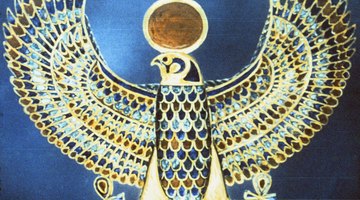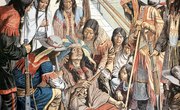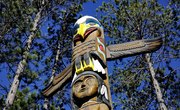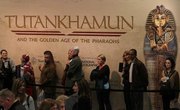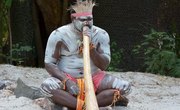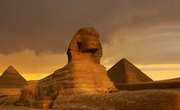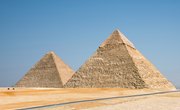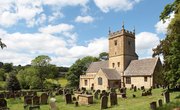Ancient Egyptian religion spanned a period of some 3,000 years, beginning in 3000 B.C. Egyptian religion during this time was polytheistic, involving the worship of many gods. Some of the gods were represented by animals, others by elements and yet others embodying certain talents or abilities. Egyptians believed that the pharaoh was the intermediary between the gods and humans and that when he died, he became a god himself. Ancient Egypt religion facts include a belief in an afterlife and created elaborate funerary rituals including the mummification process, in order to ensure their status and comfort in the next life.
Gods of Egyptian Religion
During its long span, Egyptian religion contained approximately 2,000 gods. Some of the most widely worshiped gods were Osiris, god of the underworld; Isis, the goddess of motherhood and abundance; Horus, god of the sky, and the son of Osiris and Isis; Anubis, the funerary god; Re, the Sun god; Nu the goddess of the sky; and Seth, the god of chaos and destruction. Many Egyptian villages also designated a specific god to represent them. Some ancient Egyptian individuals chose a god that supported their professions like Thoth, the god of scribes. The gods were also represented by animals, such as cats, crocodiles, rams, lions and many others.
Role of the Pharaoh
The pharaoh was seen as an intermediary between the gods and ancient Egyptian humans. He was believed to be part god and part man. If things were going well, it was believed that the pharaoh had maintained good relations with the gods. If the nation was in turmoil, the people blamed the pharaoh for upsetting the gods. Upon the death of a pharaoh, ancient Egyptians believed he would become a god if his heart when placed on a scale weighed less than a feather. One of Egypt's most famous pharaohs was Akhenaten, who abandoned the worship of other gods and headed the only monotheistic period in ancient Egypt with his worship of the ancient Egypt religion name known as the sun-disk Aten.
Funerary Rituals and Egyptian Beliefs
Ancient Egyptian beliefs included an afterlife with accompanying elaborate funerary rituals. These rituals included the process of mummification in order to maintain the integrity of the body for as long as possible after death so the spirit would have a place to reside. Also important was the “opening of the mouth” ritual. This was a purification ritual performed on mummies or statues in temples that involved using incense and anointing to invoke the senses of sight, smell, touch, taste and sound for the deceased to use in the next life. The body was then wrapped in cloth, the folds of which contained amulets and jewels and a mask bearing the likeness of the deceased was placed over the face. Depending on the deceased person's status, food, drink and riches were also stored in the tomb for use in the next life.
Temples and Pyramids
Worship and ritual affected every aspect of Egyptian beliefs and lives. The ancient Greek historian Herodotus said of the Egyptians that they were "religious to a higher degree than any other people." They built an extraordinary number of temples for the purposes of daily worship and ritual as well as for use during elaborate religious ceremonies and festivals. Luxor Temple and Karnak are among the most impressive and most visited today. Ancient Egypt is most famous for its pyramids, the great tombs built by the pharaohs to house their remains. Of the 138 pyramids documented in Egypt as of 2008, the largest is the Great Pyramid of Khufu which is considered one of the Seven Wonders of the Ancient World.
Related Articles
References
- Realm of History: 15 Major Ancient Egyptian Gods And Goddesses You Should Know About
- Ancient Pages: 10 Fascinating Facts About Pharaohs
- Canadian Museum of History: Mysteries of Egypt Life After Death
- Ancient History Encyclopedia: Egyptian Afterlife The Field of Reeds
- History: Egyptian Pyramids
- Discovering Egypt: Pyramids Temples of Egypt
Writer Bio
Lynn Blanch is a writer, translator and educator. She is the co-founder of an educational/cultural nonprofit in Brazil, speaks fluent Portuguese and has published a travel blog. She holds a bachelor's degree in liberal arts from Sarah Lawrence College.

